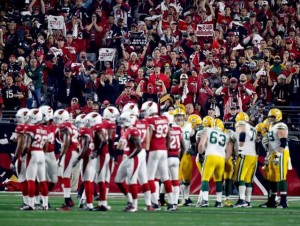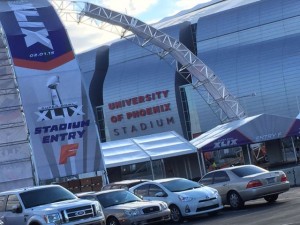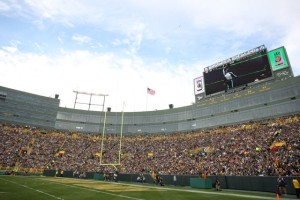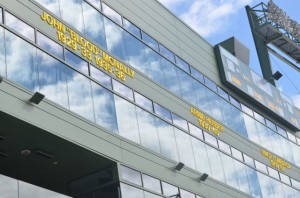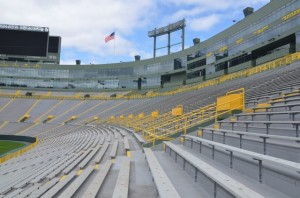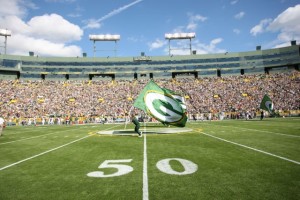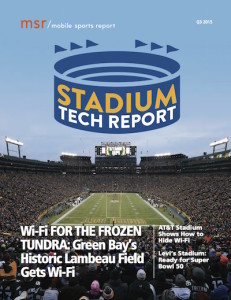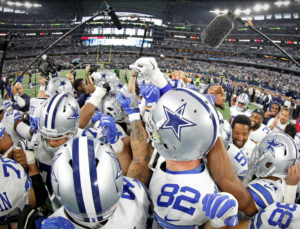
The Dallas Cowboys before taking the field against the Green Bay Packers in a Jan. 15 playoff game. Credit: James D. Smith/Dallas Cowboys
John Winborn, chief information officer for the Dallas Cowboys, sent us the info on the stadium’s biggest Wi-Fi day ever, surpassing the previous record of 6.77 TB seen on the AT&T Stadium Wi-Fi network for WrestleMania 32 back on April 5, 2016. The new total for Wi-Fi was even set by fewer fans, with attendance for the Jan. 15 playoff game at 93,396, compared to the 101,763 at WrestleMania.
Though he didn’t provide an exact number, Winborn also said that the take rate of unique clients on the Wi-Fi network for the Packers game was 50 percent of attendees, roughly 46,700, easily one of the biggest numbers we’ve seen anywhere. During the Cowboys’ excellent regular season, Winborn said the average of Wi-Fi data used per game was 5.28 TB, an increase of 33 percent over the 2015 season.
UPDATE: The AT&T folks have provided the DAS stats for the same game, with an additional 3 TB of data used on the AT&T cellular networks inside the stadium. So we’re up to 10.25 TB for a non-Super Bowl game… doubt we will get any other carriers to add their totals but sounds to me like this is the biggest non-Super Bowl event out there in terms of total data.
Any other NFL teams (or college teams) out there with peak games and/or season averages, send them in! Let’s keep updating this list!
THE NEW TOP 7 FOR WI-FI
1. Super Bowl 51, NRG Stadium, Houston, Feb. 5, 2017: Wi-Fi: 11.8 TB
2. Super Bowl 50, Levi’s Stadium, Santa Clara, Calif., Feb. 7, 2016: Wi-Fi: 10.1 TB
3. Green Bay Packers vs. Dallas Cowboys, Divisional Playoffs, AT&T Stadium, Arlington, Texas, Jan. 15, 2017: Wi-Fi: 7.25 TB
4. WrestleMania 32, AT&T Stadium, Arlington, Texas, April 3, 2016: Wi-Fi: 6.77 TB
5. Super Bowl 49, University of Phoenix Stadium, Glendale, Ariz., Feb. 1, 2015: Wi-Fi: 6.23 TB
6. Alabama vs. Texas A&M, Kyle Field, College Station, Texas, Oct. 17, 2015: Wi-Fi: 5.7 TB
7. Pittsburgh Steelers vs. New England Patriots, AFC Championship Game, Gillette Stadium, Foxborough, Mass., Jan. 22, 2017: Wi-Fi: 5.11 TB
